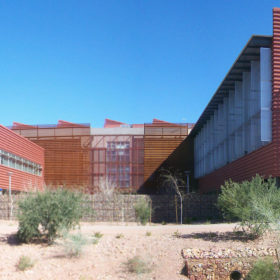
Researchers from the United States have used new passivated contact architectures to demonstrate a screen-printed silicon heterojunction solar cell on 40 micron thick standalone wafers.
A research team from the Solar Power Laboratory of the Arizona State University claim to have demonstrated a screen printed 40 micron thick silicon heterojunction solar cell, with an efficiency of 20.48%.
The cell, described in the paper Improving surface passivation on very thin substrates for high efficiency silicon heterojunction solar cells, published in Solar Energy Materials and Solar Cells, is based on an optimized thin intrinsic hydrogenated amorphous silicon layer, which is deposited onto the wafer through a new experimental procedure.
The scientists initially produced silicon heterojunction samples on 200 micron thick n-type Czochralski wafers, which was then lowered to 40 μm using a potassium hydroxide (KOH) solution. The samples were textured through alkaline wet etching, followed by an acidic cleaning process. “A three-chamber plasma-enhanced chemical vapor deposition (PECVD) cluster tool was used to deposit 6–15 nm thick intrinsic and n/p-doped hydrogenated amorphous silicon (a-Si:H) layers, forming a p-i/c-Si/i-n stack,” the research group explained. “The p-i stack was first deposited on one side of the wafer followed by the i-n stack on the other side.”
The a-Si:H layer was treated with an in-situ hydrogen plasma to improve chemical passivation. Indium tin oxide (ITO) was deposited on both the cell’s front and rear surfaces using a sputtering technique, and a silver contact was sputtered on the rear side. Still, front contacts were screen printed with silver paste. The device was then annealed for 30 min at 200 degrees Celsius.
According to the group, this process produced a thicker intrinsic a-Si:H layer, which is said to deliver better surface passivation leading to higher minority carrier lifetime and open circuit voltage. This is achieved by an improved diffusion of hydrogen to the intrinsic a-Si:H/c-Si-interface, which in turn enhances the surface passivation.
“In this work, a bilayer of intrinsic a-Si:H was formed by first depositing a 6 nm of intrinsic a-Si:H, followed by hydrogen plasma, and finally a 7 nm of intrinsic a-Si:H was deposited,” the researchers said. “The best efficiency on a 40±2 micron thick wafer using the optimized process and SiOx:ITO ARC stack was 20.48%.”
According to the group, the open-circuit voltage of the cell increases with an increase of intrinsic a-Si:H thickness and implied voltage at maximum power and open circuit improved by an average of 21 mV and 8 mV, respectively. “We successfully demonstrated experimentally the potential to exceed 21% efficiency using screen printed 40 micron thick silicon heterojunction solar cells,” they concluded.
Lắp đặt điện mặt trời Khải Minh Tech
https://ift.tt/2X7bF6x
0906633505
info.khaiminhtech@gmail.com
80/39 Trần Quang Diệu, Phường 14, Quận 3
Lắp đặt điện mặt trời Khải Minh Tech
https://ift.tt/2ZH4TRU
Không có nhận xét nào:
Đăng nhận xét